Ultra-Wide 9.8‑Ft 10‑Pack Plastic Bird Spikes for Fence, Railing & Roof
$9.99 Original price was: $9.99.$7.99Current price is: $7.99.
If stepping out in the morning only to find pigeon droppings lining your railing has become routine, the 9.8 Feet 10 Packs Bird Spikes, Bird Deterrents for Outside, Bird Spikes Deterrent, Pigeon Spikes, Bird Spikes for Outside to Keep Birds Away, Plastic Fence Spikes for Railing and Roof gives you a humane, no-fuss way to reclaim your space. Made from UV‑stabilized polycarbonate with a five‑year warranty, the nearly invisible 9.8 ft strips form a physical barrier that keeps pigeons, crows and seagulls from landing, without harming a feather.
Description
If you’re tired of dreaded droppings ruining your patio or rooftop, the Ultra-Wide 9.8‑Ft 10‑Pack Plastic Bird Spikes for Fence, Railing and Roof is a game‑changer. This ultra‑wide kit gives you a nearly 10‑foot long barrier that refuses pigeons and crows a landing, while staying discreet and damage‑free to your home. Imagine the relief when your morning walk outside finally feels clean and peaceful, without bird noise or mess banging on your nerves.
Key Customer Benefits
- Keeps your home and business clean and safe: Pigeons and crows leave behind acidic droppings that can corrode paint, brick, metal, and even stone over time. These spikes prevent birds from landing, cutting that damage and reducing the need for constant clean‑ups or repairs.
- One‑and‑done, low‑maintenance deterrent: Once installed, you can pretty much forget about them. Made from UV-treated polycarbonate plastic, they resist weather, bleach, and heat, and won’t rust or decay even in harsh sun or rain.
- Humane physical barrier that doesn’t harm birds: These spikes don’t injure wildlife; they simply prevent perching by removing stable landing spots. Humane organizations and building safety experts recommend this as a safe alternative to poisons or traps.
- Ultra‑wide coverage cuts installation time in half: At 9.8 feet per strip and bundled in a 10‑pack, you cover nearly 100 ft instantly without visible gaps. The extra‑wide width also discourages even larger birds like crows or pigeons more effectively.
- Virtually disappears from your curb appeal: The clear or translucent plastic base makes these spikes nearly invisible from a normal viewing angle. That means less aesthetic impact on railings, ledges, awnings, or signposts.
- Cost‑effective long‑term solution: Unlike nets or electrified deterrents, there’s no equipment to power or repair. Experts estimate that once installed properly, bird spikes deliver reliable protection for years; so your upfront cost pays off quickly.
Product Description
You’ve got 9.8 feet of deterrent power in each strip, bundled across a full 10‑pack, nearly 98 feet of coverage immediately ready to install. No more half‑measures or little plastic brackets that birds just hop over. This setup is designed to blank out your gutters, ledges, porch rails, or fence tops with one continuous, physical barrier; strong enough to discourage pigeons, crows, and other hefty perching birds, yet clear, flexible, and low‑profile so it doesn’t jar your home’s appearance.
Think of it this way: every sharp‑blunt spike is like a 3.9–inch obstacle for a bird’s landing gear. The blunt‑ended rods poke just enough to disturb the bird’s balance without piercing or injuring; it’s uncomfortable enough to scare them off, but still 100 percent humane and legal, even in areas where harming wildlife is strictly prohibited. This is exactly why organisations like the RSPB publicly endorse spike strips as a safe option for pigeon control, and why sources like Bird Barrier call them “one of the most effective stand‑alone deterrents.”
That long strip is built with a UV‑treated polycarbonate base, similar to what industry leader Bird‑X uses in its clear spike product line. They advertise that this material won’t corrode, fade, or crack in sun, rain, or heat exposure, essential if you live in a climate where Lagos sun and tropical storms can cook or erode lesser plastics. Once it’s glued or strapped down with their supplied nano‑adhesive or tie wraps, you’re basically done, zero upkeep, no monthly refills, just long‑term defense against nests, droppings, and noise.
What sets this kit apart are three things: scale, stealth, and simplicity. A 9.8‑foot strip covers an entire railing or narrow ledge by itself so you don’t have to piece together dozens of little 12‑inch segments. The translucent spikes virtually vanish from a distance, meaning you don’t have to compromise your view or curb appeal. And because each strip snaps and cuts easily, matching curves or odd angles only takes moments, not hours of fiddling. No screws, no nest‑grooves, no clever wiring, just product on surface, birds off it.
Let me paint you a real‑world picture: a homeowner messaged the manufacturer after installing a similar system and said “like magic the problem disappeared,” recounting how pigeon cooing and poop‑coverage vanished overnight. Within days, their roof‑edge stayed clean long enough to relax on the patio again in the morning. Another person used strip‑runs along their arched garden arbor after tomatoes were ruined by droppings overhead; they mounted the clear spikes with epoxy glue and never had to sweep bird mess again for four months so far. Those are Bird‑X stories, but they shine a light on what the 9.8‑ft 10‑pack can do if placed in the same spots.
In short, this is a bird‑blocking tool that’s big enough to cover your problem, smart enough to hide in plain sight, and tough enough to outlive the rainy season; all while keeping things completely safe for the birds, neighborhood birds, and everyone around.
Product Specifications
| Specification | Details |
|---|---|
| Product Length per Strip | 9.8 ft (≈ 3 m) strip: covers nearly the same as the 10 ft (3.05 m) regular width spikes sold by leading brands like Bird‑X. |
| Total Coverage (10-pack) | ≈ 98 ft (≈ 30 m) of barrier – enough to line long rooftops, railings, or gutters without glue gaps or short segments |
| Spike Height | ~4.75 in (≈ 12 cm): tall enough to prevent stable perching by larger birds like pigeons, crows, gulls. |
| Base Width | ~1.75 in (≈ 4.5 cm): provides a broad, stable mounting platform even in windy conditions. |
| Recommended Coverage Width (per row) | ~7 in (≈ 18 cm) of effective deterrent width: one row typically sufficient for flat ledges, but a second row is suggested on wider ledges to eliminate foothold spaces |
| Material | UV‑stabilized transparent polycarbonate: resists sun damage, heat, and rainfall; remains clear and flexible over time. |
| Spike Tips | Rounded/blunt: designed to deter landing without harming feet or feathers; bird-safe even in wildlife-sensitive zones |
| Attachment Options | Compatible with special spike adhesive (caulking gun glue), stainless screws, sheet‑metal nails, or nylon-tie wraps for railings or pipes. |
| Environmental Resistance | UV-treated material resists yellowing, fading or cracking in hot sun or humid tropics like Lagos summers |
| Maintenance | Zero ongoing upkeep: clean off litter, nests or leaves seasonally to maintain barrier performance and safety |
| Warranty | 5-year guarantee against material defects and workmanship: backed by trusted fencing/bird control brands like Bird‑X. |
| Usage | Suitable for rooftops (gutter edges, ridges), balconies, fence tops, signage, arbors, pergola ledges, solar panels, air‑conditioning units |
| Safety & Compliance | Compliant with general wildlife protection laws (e.g., non-injurious, RSPCA‑approved humane methods) |
How to Use / Installation Guide
Step 1: Survey & Clean the Area
Walk along the spots where birds nest, perch or leave mess; gutters, railings, ledges. Take photos so you remember exactly what you’re treating, and make sure all old nests, droppings and seed husks are removed. Wear gloves and a mask, rinse the area or scrub with a mild disinfectant, and let everything dry for a full day if possible. That removes bird scent and debris so adhesive or screws bond properly.
Step 2: Plan Placement
Each strip is about 9.8 ft long, and you can snap them into shorter sections as needed. Place them with the base overhanging ledge edges by half an inch so birds can’t balance on the edge. Leave no gaps between strips, aim for 1 cm or less (about ½ in) or birds may find footholds. On wider ledges, use two rows, staggered, so spike tips nearly touch, no gap larger; than 2.5 cm (1 in).
Step 3 Select Your Attachment Method
On wood or concrete you can use construction adhesive, screws or nails, just make sure each end of every strip is firmly anchored. If using screws or nails, place one every 15–18 in (40–50 cm) along the strip’s pre‑drilled mounting holes. The supplied adhesive (UV‑stable silicone or polyurethane) is ideal for most non‑porous surfaces, apply a bead along the full strip, press down firmly, and hold in place for a few minutes before moving to the next section.
Step 4: Installing with Precision
Work from one end to the other, nesting each new strip tightly against the previous. If you need to cut around corners or unequal edges, lightly score or snap the strip at the base, not at the spike rods, to keep structural integrity intact. For best results on a curved or segmented surface, gently flex the strip at its snapping grooves.
Step 5: Inspect & Maintain Confidence
Right after installation, check for visible gaps, loose ends or spike tips bent inward. Over the next month, visit the area occasionally to remove any stuck leaves or nesting materials. Once the initial cycle is clear, you can go back to seasonal checks, no harsh chemicals or hardware needed unless damage happens over time.
Lean Care and Common Mistakes to Avoid
One customer told me they didn’t clean first, saw the spikes fail within days, then realized bird scent still lingered. Another cut strips at the spike tips (never at the base), which left them flimsy and unattractive. Stick to base snipping, be tidy, and let glue dry thoroughly before stepping off your ladder.
In a nutshell: clear the space thoroughly, plan your layout to avoid gaps and overhang correctly, secure strips using proper adhesive or anchors, and perform light maintenance periodically to guarantee that ‘problem‑spot turns into a clean no‑bird zone’ story you’ll enjoy every morning.
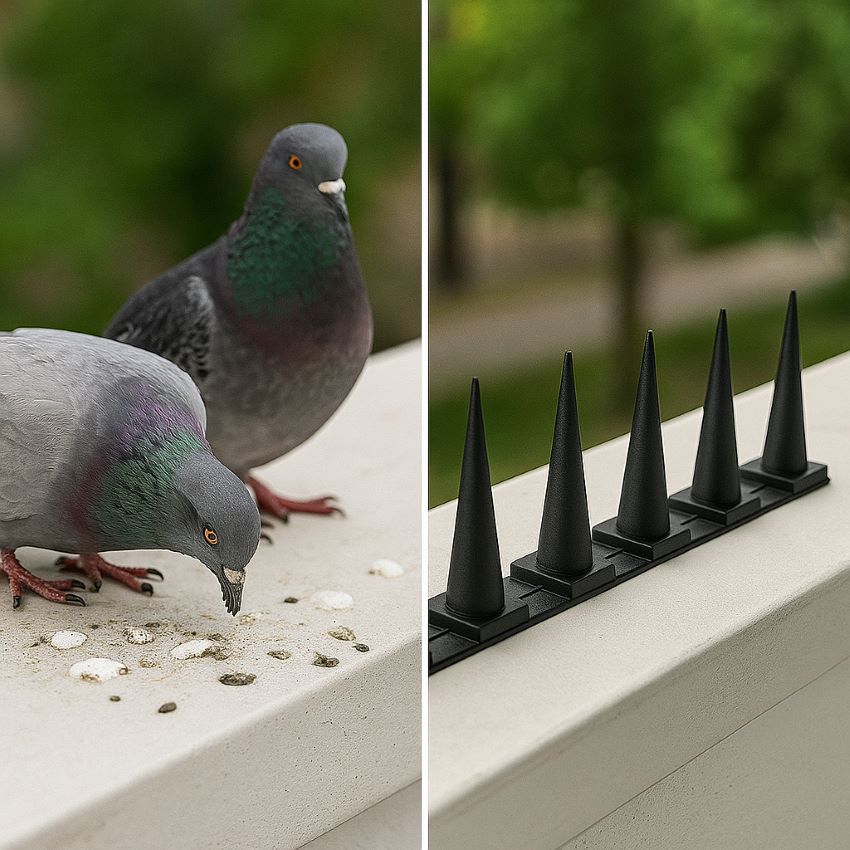
FAQs
1. Are these plastic spikes humane? Could they injure pigeons or sparrows?
100% no harm. These spikes use dull, blunt tips, not steel spikes or barbs. They simply make landing uncomfortable rather than dangerous.
- As experts at NBC Environment stress, their design is fully legal and approved by wildlife welfare organizations, including the RSPB in the UK. Their goal is to discourage, not to hurt.
- Bird B Gone reinforces this: “the purpose of the spikes is to block the birds’ feet … if the birds’ feet can’t reach, they can’t roost; they’ll move on elsewhere.” The tips are blunt and flexible, so no piercing injuries, ever.
Tip from your pest control pal: Think of the spikes as gentle boundary markers, not traps. Once birds realize they can’t land, they look elsewhere. That’s how they stop coming, not through harm.
2. How long will these plastic bird spikes last in sun and rain?
High-end polycarbonate spikes typically last 5 to 15 years; no rust, no cracking, no fading. Just keep them clear of twigs or mold for best longevity.
- Made from UV-stabilized polycarbonate, spikes withstand extreme heat, intense sun, and tropical humidity. They’re guaranteed not to crack or yellow quickly even in harsh sunlight.
- Many manufacturers offer a 5–15 year warranty on plastic spikes. Some industrial plastic lines even go up to 15 years; steel versions may last longer (up to 25 years) but cost more.
Pro tip: Keep them clean and let sunlight dry any adhesive. That’s practically zero upkeep, and the spikes reward you with durability for years.
3. I’ve heard birds sometimes build nests inside the spikes. Can that really happen?
Rare, but it can. Smarter birds like corvids or magpies have been seen twisting modern spike strips into nest casing or shelter. That’s crafty and only happens when installation isn’t tight.
- Scientific observations show some birds have collected anti-bird spike strips to weave into their nests in Antwerp, London, and elsewhere.
- Even forums in the woodworking community report birds nesting inside poorly installed spikes, more so when gaps or flat surfaces existed.
Pro tip: Overlap strips so there’s no gap greater than 1 cm (½ in), flush to ledges with a ½ in overhang. That gives no support, no edge, nothing for nesting. In practice, a single well-laid row is trash for tents or tiny nests, especially for pigeon-sized birds.
4. Do bird-proofing spikes actually work for pigeons? I read they quickly learn and walk around them.
They absolutely can but only if properly installed. Many complaints about failure come from misalignment, large gaps, or weak bonding.
- One user posted:
“I wouldn’t bother… birds quickly learning where to land, and walking between or through the spikes to get where they want to go.”
They later admitted: “That install had 1–2 in gaps and no overlap, huge mistake.” - Industry installation guides like Bird B Gone and Defender emphasize: no gap should exceed 1 in (2.5 cm); strips should overhang edges by ½ in, and if your ledge is wider than ~7 in, use a second staggered row.
Pro tip: If pigeons are still landing nearby after install, walk the row: see if your strip ends pull away from ledge edge or if debris has slipped below. Seal those spots and birds vanish.
5. What’s the best way to attach these to a metal railing or hot surface, without screws or damage?
Secure attachment is vital; if clips or glues aren’t an option, a wooden channel and zip‑tie support system works well.
- A Reddit user on r/pestcontrol shared:
“It depends a lot on what you are installing it on. Just find a way to attach the board the spikes are molded into firmly.”
- One commonly accepted method is this: Build a narrow cedar or treated block the size of the rail top, attach spikes to that, and then fasten that whole assembly to the rail with UV-rated zip ties, clamps, or hiding screws from below.
Safety note: On slick painted metal, adhesive rarely lasts long, so combine mechanical fasteners and adhesive rather than rely on either alone.
6: Could spikes interfere with satellite dishes or void warranties if installed near sensors?
Probably yes, especially with electronic, sensitive surfaces. Use caution and check device specs before mounting spikes.
- A homeowner warning from Reddit:
“I wouldn’t bother… those spikes seem pretty worthless… birds walk right onto the dish.”
Another user advised that spikes might obstruct sensors or ruin hydrophobic coating on dishes like Starlink, so they were not recommended near dish-face areas.
Pro tip: Always test: use temporary clip‑on strip and observe performance. Or better, place the spikes behind or below the dish surface, not on dish-facing zones. When in doubt, consult your dish manufacturer first.
7: How close do strips need to be to walls? How big is too much gap between strips?
Tight spacing = no foothold for birds. Expert consensus says:
- Spikes should hang over at least ½ in the edge, and sit no more than 1 in from any wall or back surface.
- If the ledge width is over ~7 in, consider two overlapping rows, offset so spike tips nearly meet, again no gap bigger than 1 in.
This layout limits any flat surface area birds can stand on, making landing essentially impossible.
8. Are bird spikes legal and acceptable to use in my neighborhood?
In most jurisdictions, including Lagos, these plastic spikes are fully legal when installed humanely to avoid injury.
- Bird control regulations (like the UK Wildlife and Countryside Act, or local conservation guidelines) generally allow spike bars that do not harm wildlife and don’t block nesting space during breeding season.
- If you’re removing an active nest with eggs or chicks, that’s protected. Wait until the nest is dormant or contact local wildlife authority; they’re usually supportive once active nesting is over.
Pro tip: If you live in a heritage area or bird sanctuary, consider posting photos of your install to local environmental groups; they’re often fine as long as the spikes stay above nesting zones, not inside or underneath.
Troubleshooting Tips and Ideas
| Mistake to Avoid | Why it fails | How to prevent |
|---|---|---|
| Gaps >1 in at strip seams or wall or edge | Birds find footholds or scratch-behind paths | Press and overlap tight, use nonthermal‑shrinking glue or fasteners |
| Skipping site prep (old spots or droppings left) | New adhesive can’t bond securely, strip lifts | Scrub with mild detergent and rinse thoroughly before attaching |
| Using only adhesive on slick surfaces | Heated or painted metal often loses grip in humidity | Add mechanical fasteners or alternative mounting like zip-ties |
| Installing too early (during nesting season) | Can disturb eggs or birds may rebuild before fledging | Remove nests only after fledging and wait until fall/winter for install |
| Expecting spikes to “kill ever-present flocks” alone | Birds adapt, alternate spots appear | Combine with bird feeders moved away, trimming, noise deterrents for better outcome |
Conclusion
Just like they say in the bird‑control world: good spikes bring big relief and when installed properly, they cut pigeon visits by up to 80 percent in treated zones. That means less droppings, fewer stains, and no more cleanup marathons; especially after heavy flocks.
Worried your home might one day need major repairs from bird acid damage? Even public monuments struggle: in Saint Paul alone, accumulated repair and cleanup costs tied to pigeon infestations run into hundreds of thousands of dollars each year. Spending a little now on the 9.8‑ft 10‑pack bird spikes could save you big time over the years.
Here’s some peace-of-mind you can enjoy:
- Built to last in Lagos weather: crafted from UV‑stabilized polycarbonate, these spikes resist fading, cracking, or yellowing for 5–15 years.
- Backed by a generous warranty: plastic versions commonly carry 5‑year guarantees, with premium lines offering up to 15‑year warranties.
- You’re never on your own: many suppliers provide technical support from experienced installers. And if you’re unsure what color or mounting method to choose, I’m here to talk through your unique setup.
Installing this system is more than DIY; it’s adopting peace of mind. No bird droppings on your railings, no sticky mess on your roof, and no angry neighbors complaining about bird noise or poop-decibel shift at dawn.
Your next move:
- Measure all ledges, rails, gutters, and eaves you want protected (think long‑term, not spot‑treating).
- Choose the 9.8‑ft, 10‑pack length strips; they’re cost-effective, easy to trim, and perfect for long runs with minimal seams.
- Decide if you’ll use glue, screws or ties based on your surface type (remember: clean and prep surfaces first).
- Install with overlapping ends and edge overhang to eliminate footholds.
- Keep an eye on it for the first month, tidy up any debris and verify no loose tips, then switch to seasonal checks only.
Sound good? This kit gives you nearly 100 feet of invisible, long-term defense where birds once ruled top-down. Take back your outdoor space. If you’ve got questions about curved roof tiles or mounting on solar trim or want reassurance before you go up a ladder; I’m just a message away. You’ll be enjoying a bird‑free morning coffee before you know it.
Related products
-
Sale!
Solar Predator Eyes 2 Pack, Motion Activated Animal Deterrent for Coops and Yards
$19.97Original price was: $19.97.$17.97Current price is: $17.97. Buy Now -
Sale!
Safer Brand Critter Ridder Animal Repellent Granules, 2 lb, OMRI Listed
$19.99Original price was: $19.99.$9.88Current price is: $9.88. Buy Now -
Sale!
2025 Solar Animal Repeller – 26 ft Detection and 110 Degree Coverage
$32.99Original price was: $32.99.$29.97Current price is: $29.97. Buy Now -
Eco‑Solar Ultrasonic 3‑in‑1 Animal Repeller for Squirrels, Deer, Raccoons, Cats
$38.98 Buy Now
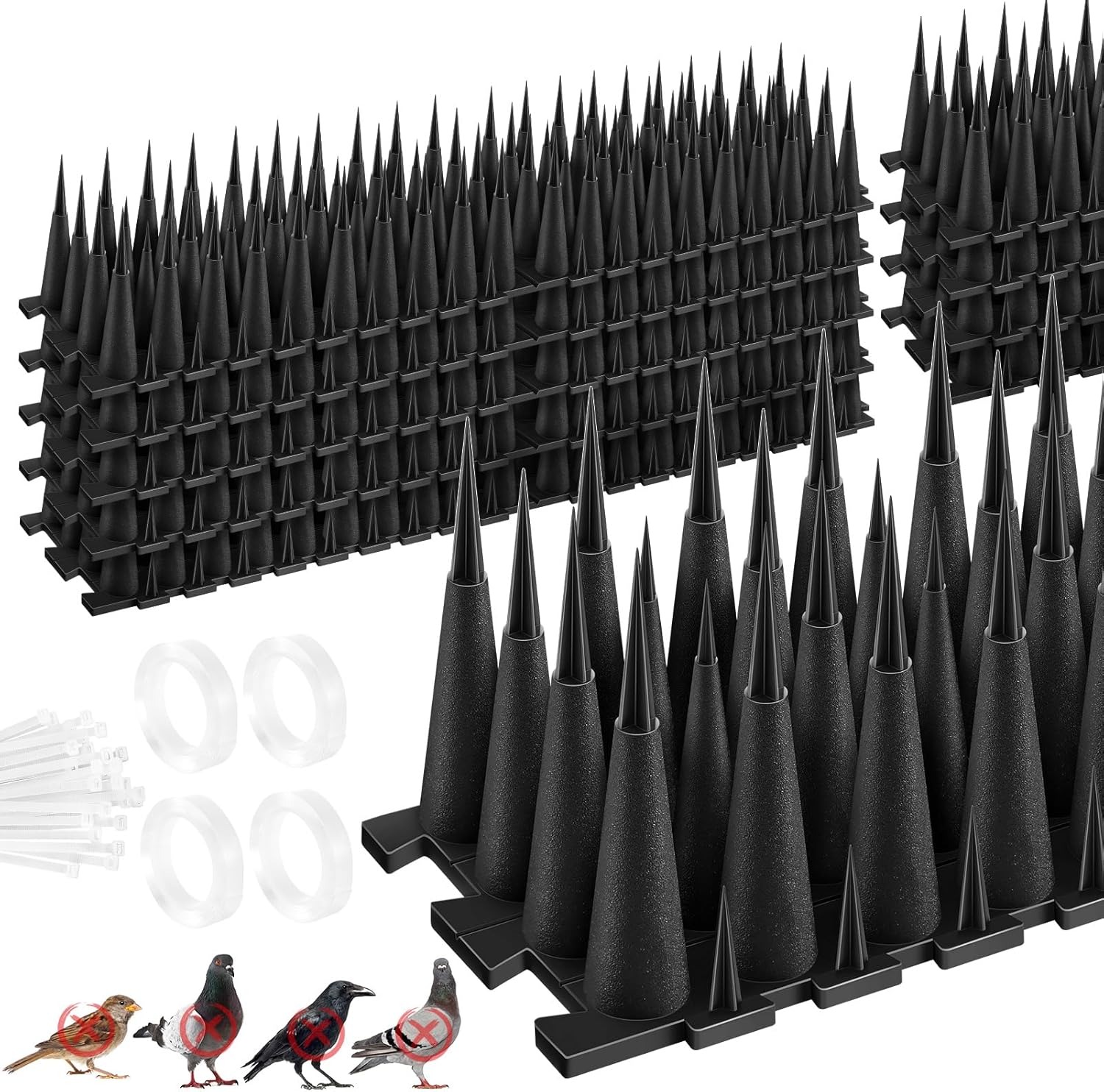

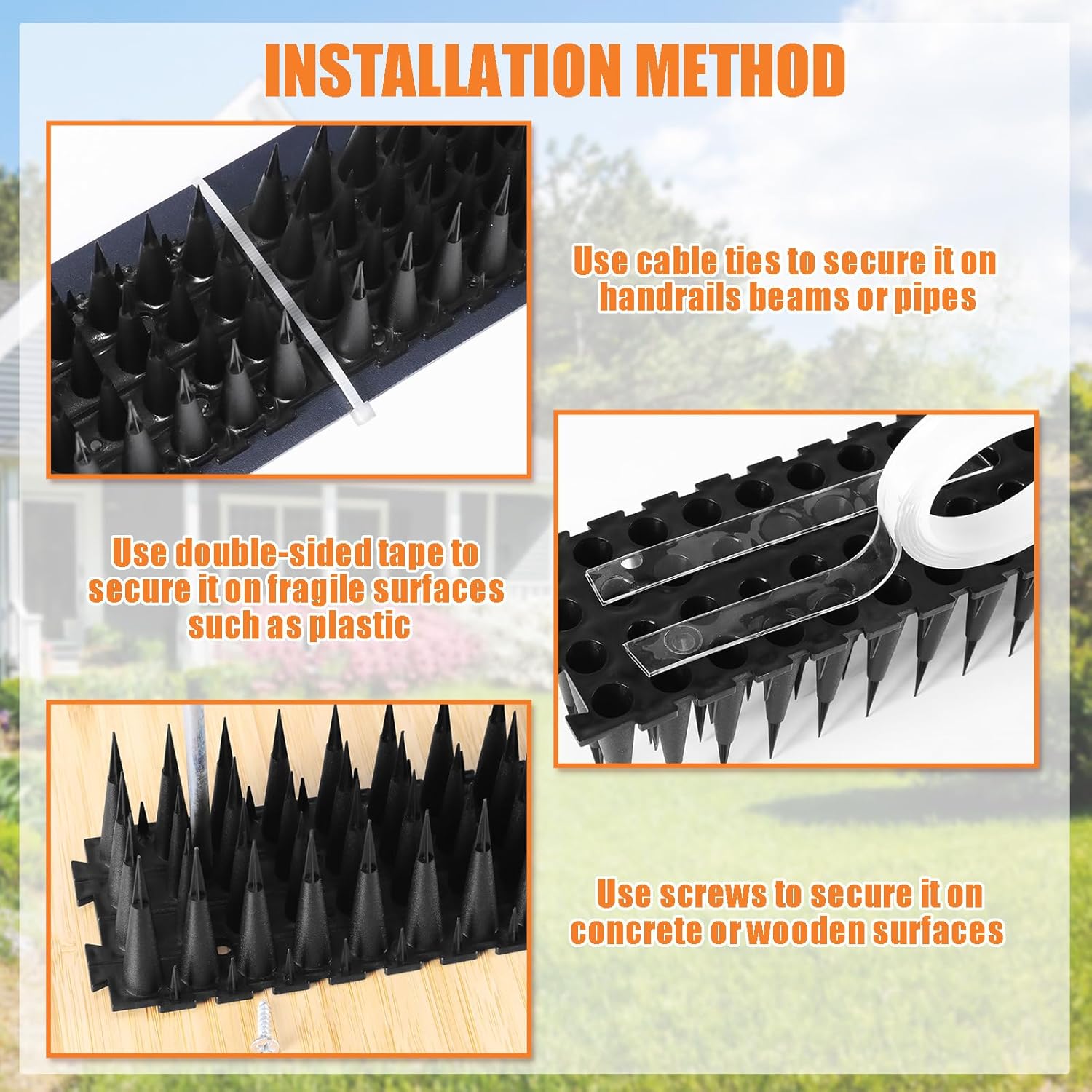
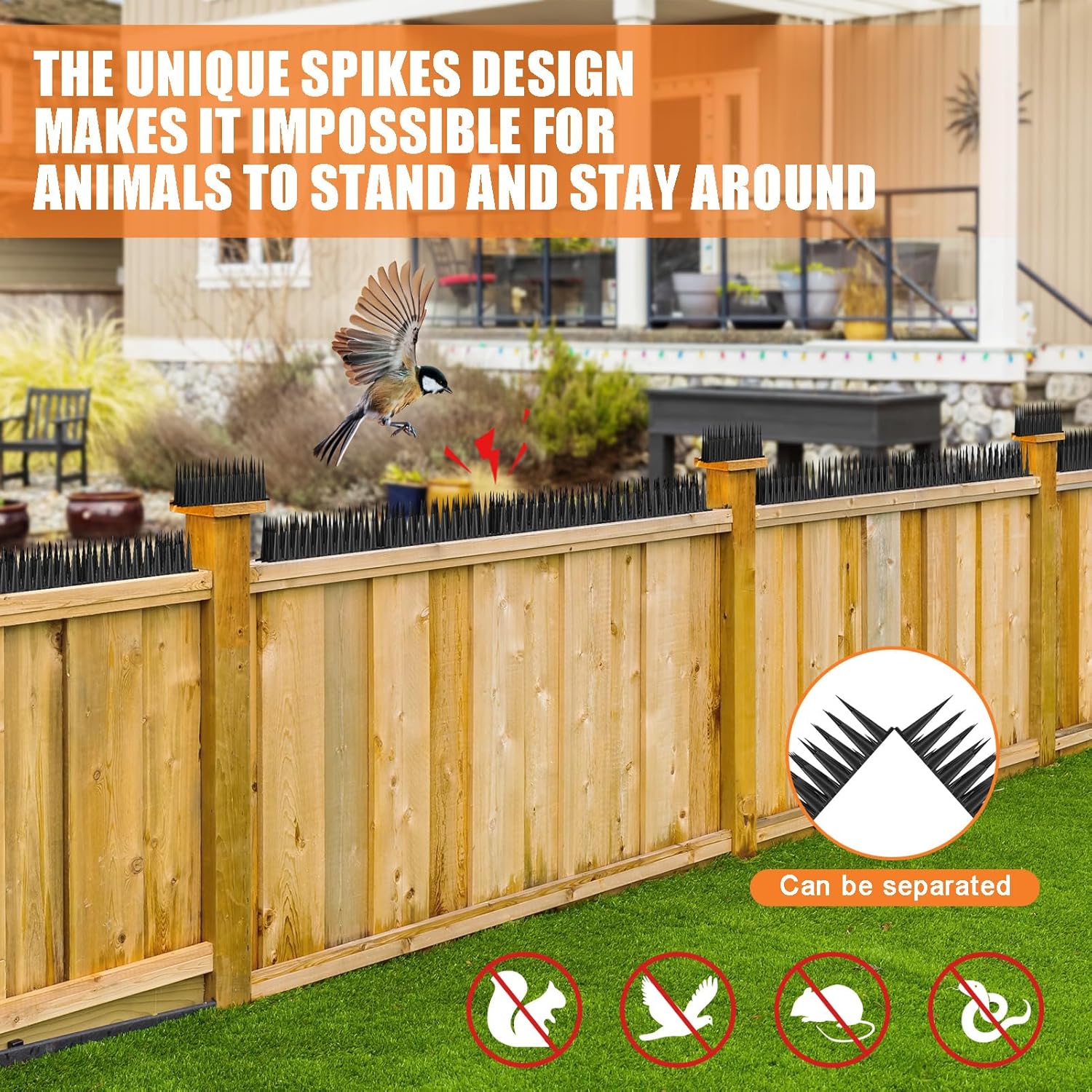

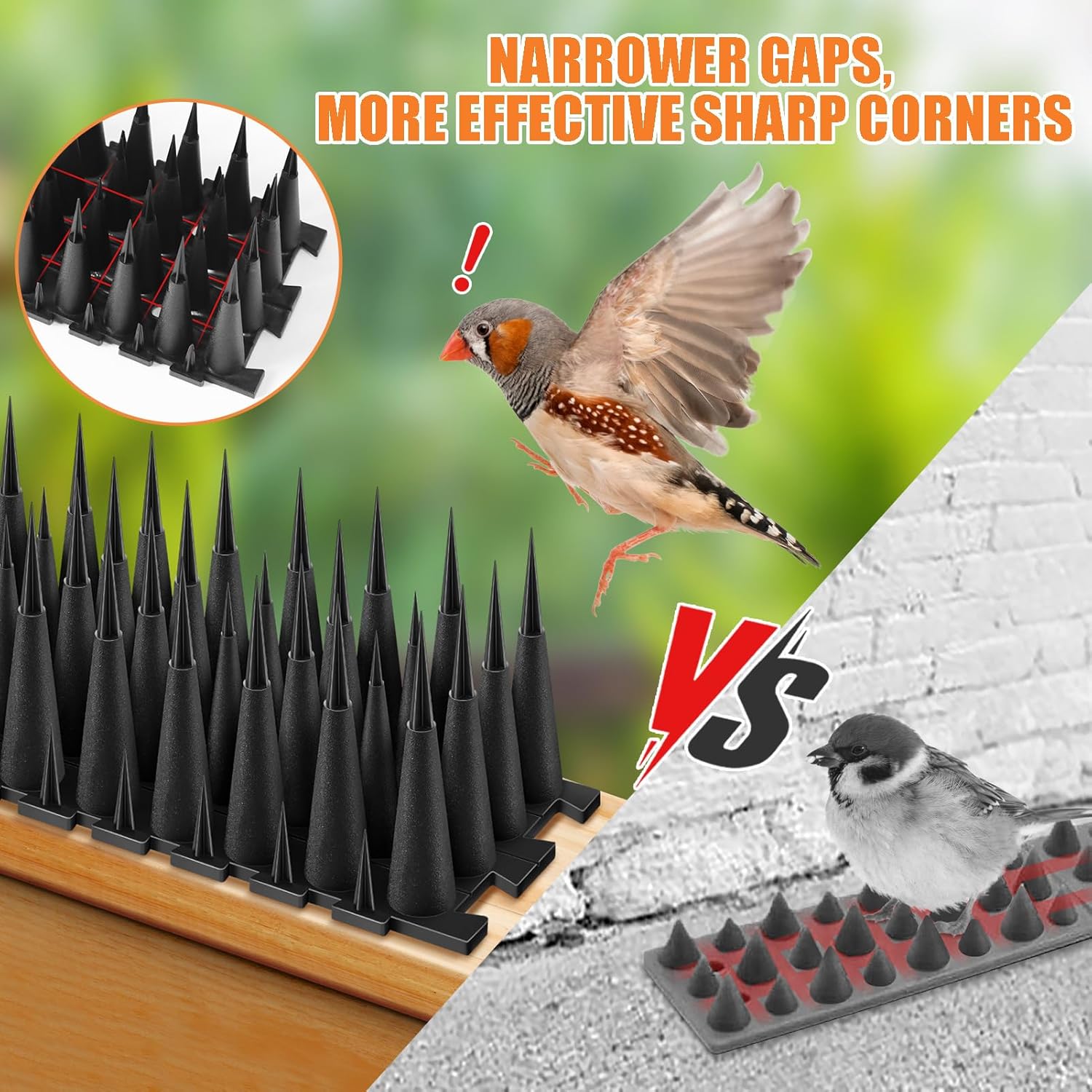
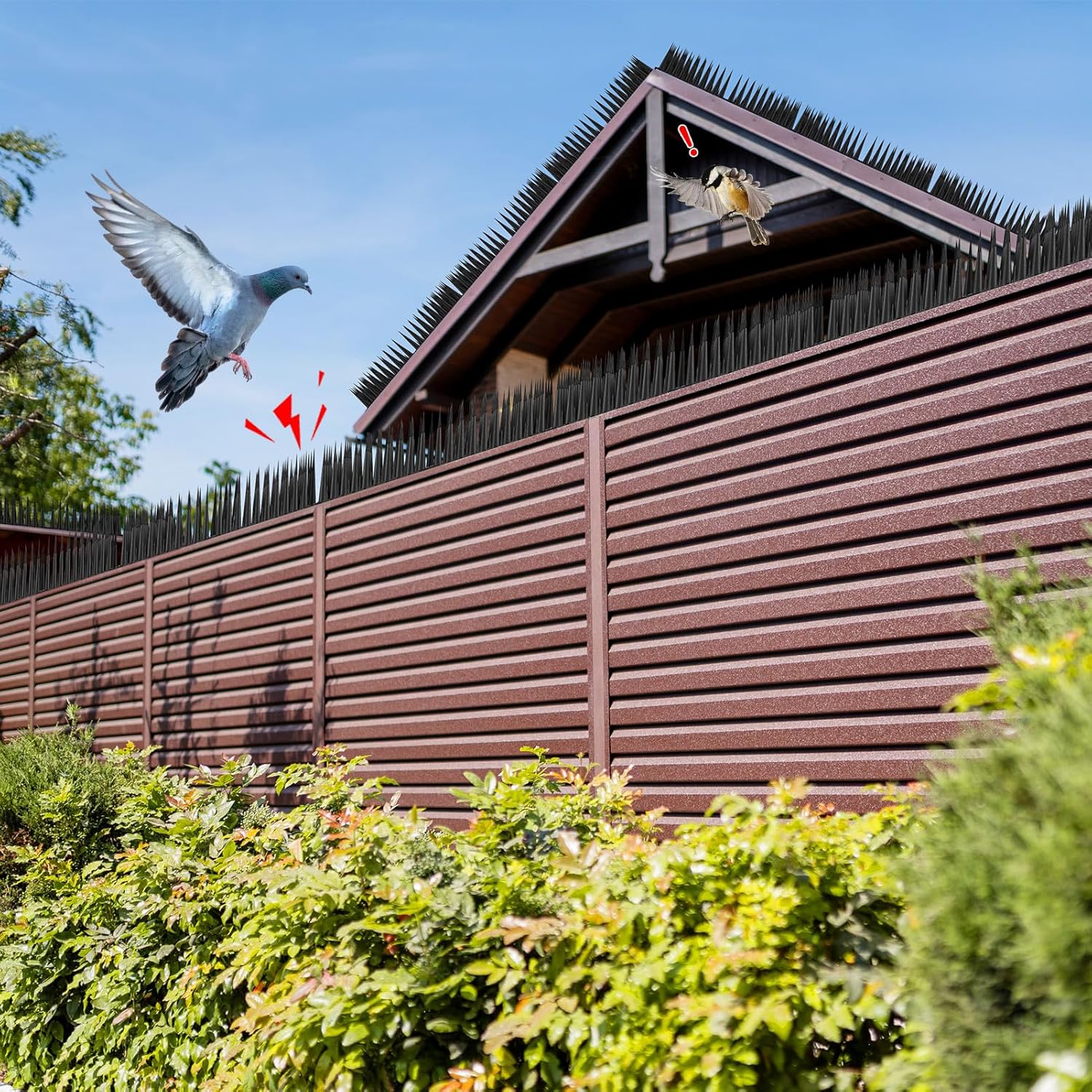
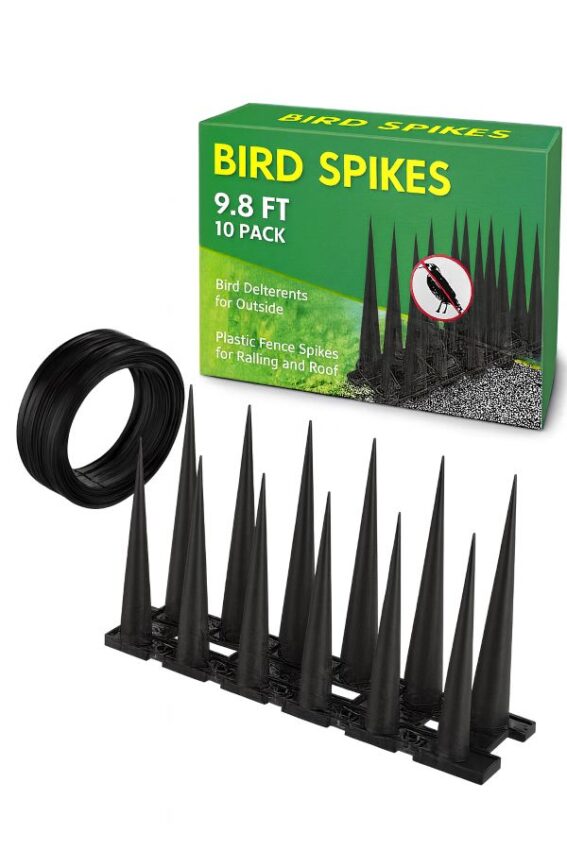
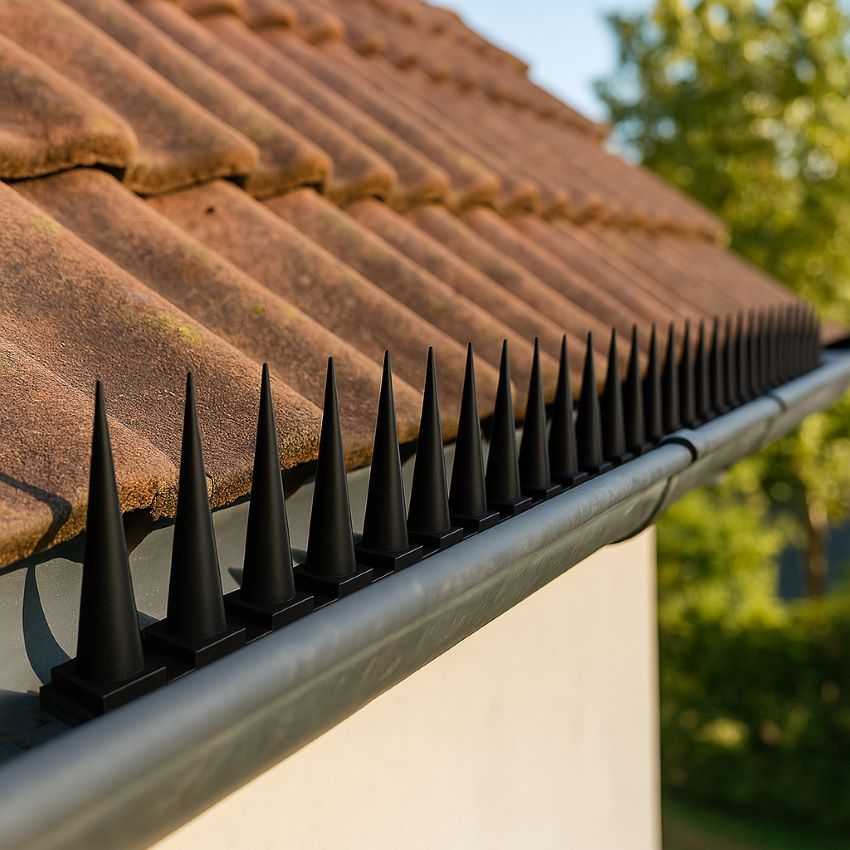
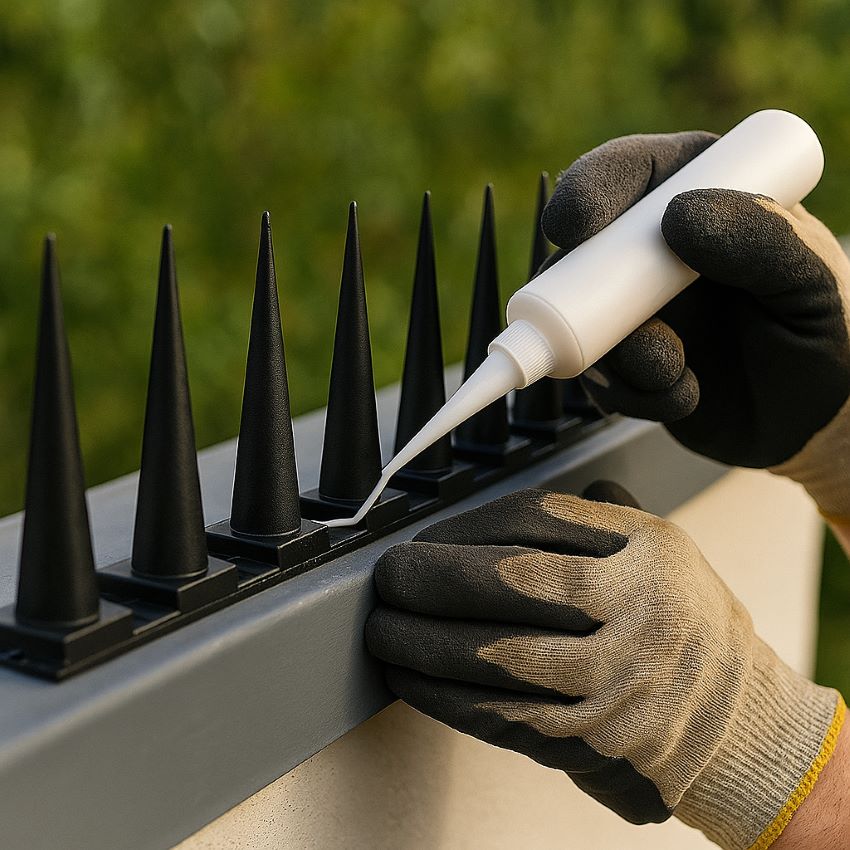
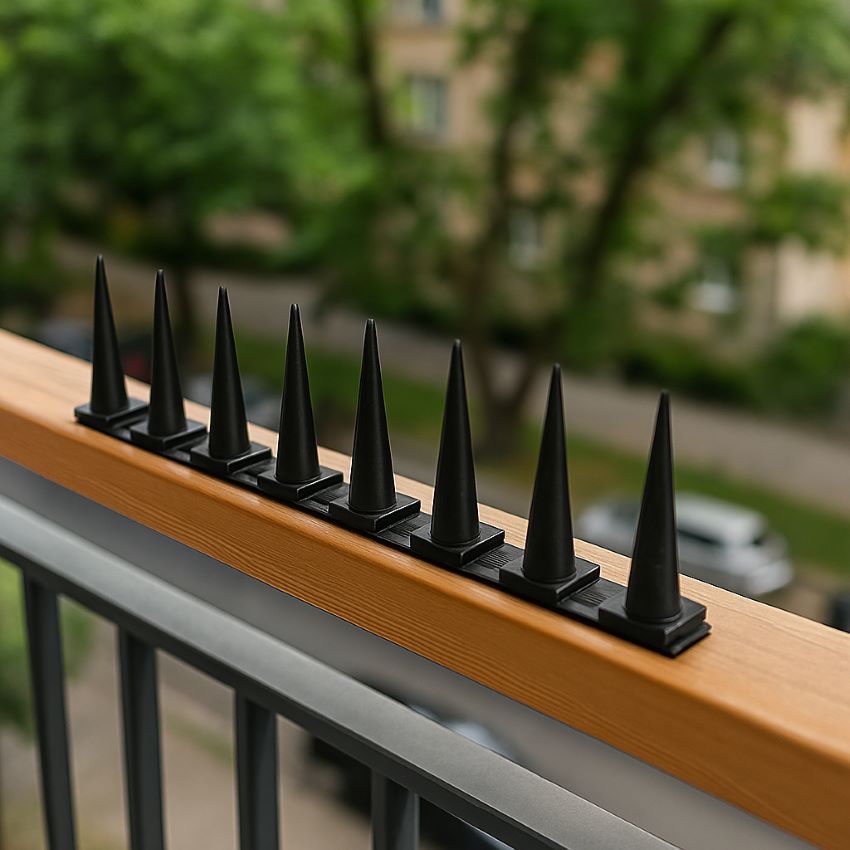
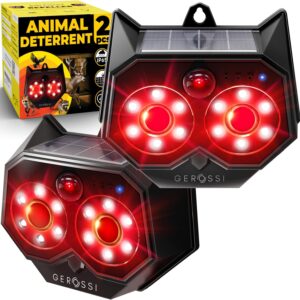

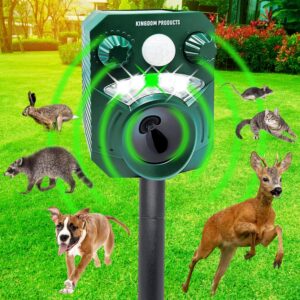
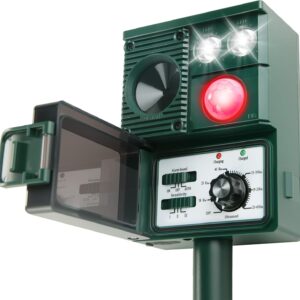
Reviews
There are no reviews yet.